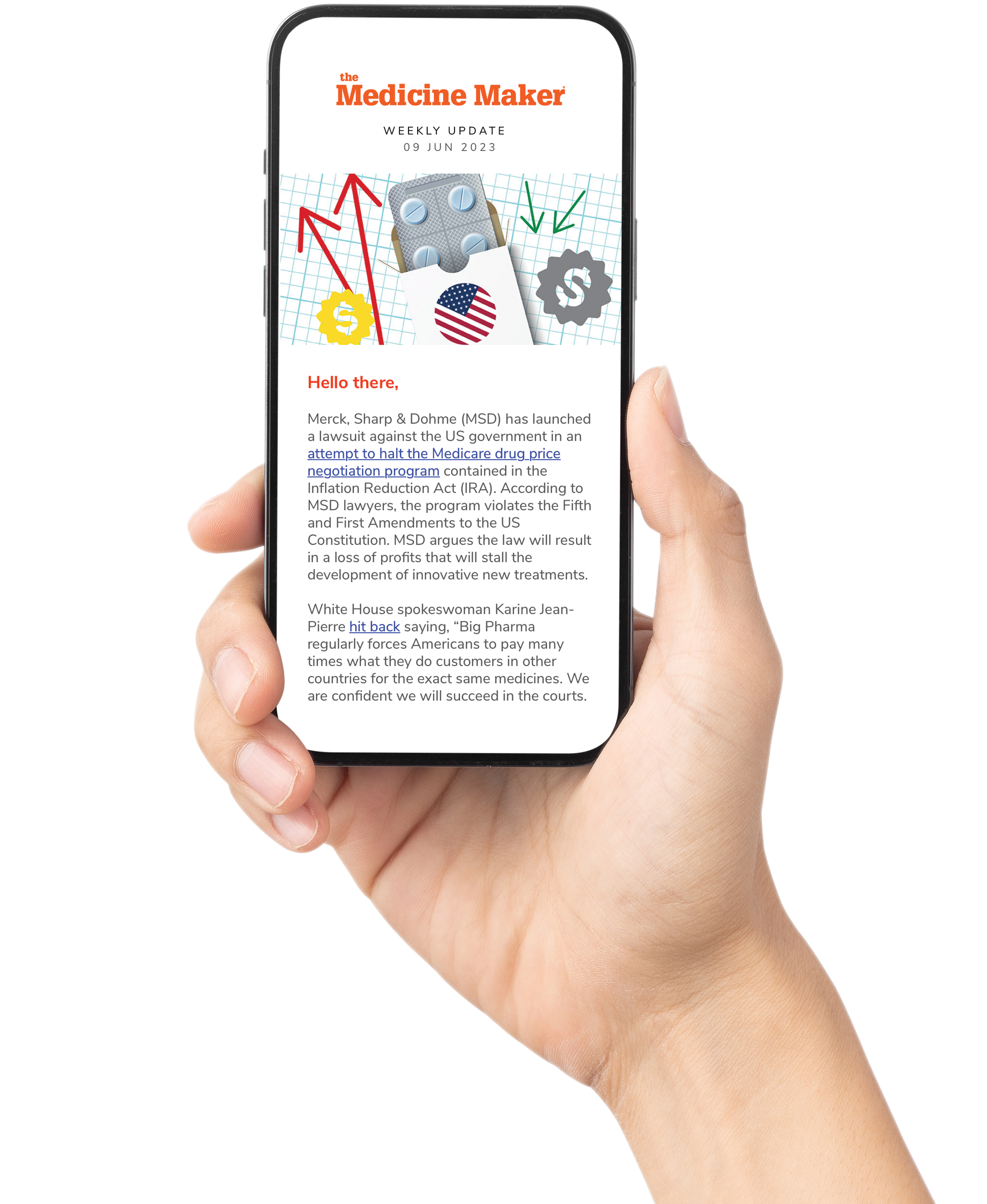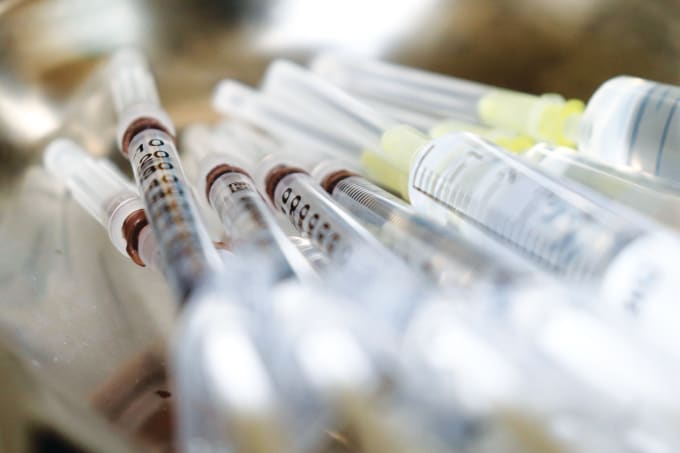
Sexual dysfunction affects hundreds of millions of people worldwide, yet remains one of the most overlooked areas in modern medicine. For patients left underserved – especially those recovering from prostate surgery or living with conditions for which current therapies fall short – relief can be elusive.
Another Day Pharma, a UK-based pharma company, wants to change that. The company is developing BZ371A, a novel topical therapy with a unique mechanism of action rooted in nature – specifically, a peptide derived from the venom of the Phoneutria nigriventer spider. This compound could present new opportunities in treating erectile dysfunction (ED) and female sexual dysfunction (FSD) by bypassing conventional neurological pathways and directly stimulating nitric oxide production.
Here, Carlos Sanchez, Another Day Pharma’s chairman, shares the company’s vision for reviving sexual medicine as a serious therapeutic frontier by explaining the science behind BZ371A, and discusses why he believes the time is right to push past stigma and bring this “first-in-class” therapy to patients and markets around the world.
What kind of strategic partners is Another Day Pharma seeking to license or co-develop BZ371A, and what criteria are most important in selecting them?
Sexual dysfunction remains one of the largest unmet medical needs globally. While not life-threatening, conditions such as ED and FSD significantly impact the quality of life and emotional wellbeing of millions. Despite this, they are often deprioritized by the pharmaceutical industry because of challenges in reimbursement and perceived lower urgency.
We can change this narrative through strategic partnerships. Whether pharmaceutical groups or life sciences investors, we can address this critical, underserved space with partners who will have a strong focus on men’s and/or women’s health, particularly those with established capabilities in gynecology or urology.
Novel distribution strategies are helping to address some of the observed issues in dealing with these conditions. Innovative digital health platforms such as Hims & Hers in the US, and similar models in Europe, have demonstrated effective, discreet, and direct-to-patient engagement, which has been especially relevant for the stigma associated with these cases. For many patients, these alternative access channels represent a critical step toward seeking treatment.
Ultimately, we value partners with therapeutic alignment, demonstrated market access capabilities, a willingness to invest in education and stigma reduction, and a shared commitment to improving the lives of patients and couples affected by sexual dysfunction.
How do you see BZ371A addressing the gaps left by current treatments like tadalafil?
Both drugs, BZ371A and tadalafil, act on the nitric oxide/cyclic guanosine monophosphate (NO/cGMP) pathway. This pathway starts with the production of NO, which leads to muscle relaxation and vasodilation, allowing blood to flow into the penis, a necessary step for an erection to occur. However, tadalafil acts at the end of the pathway by preventing its deactivation through the inhibition of PDE5, an enzyme responsible for the degradation of cGMP, the molecule that promotes muscle relaxation and vasodilation.
Therefore, tadalafil will only work if the pathway is already activated by NO, meaning that the neuronal stimulus through sexual stimulation must be functional for NO production to trigger the NO/cGMP pathway. The challenge in patients who undergo prostatectomy is that the neuronal pathway connecting sexual stimulation in the brain to vasodilation and erection in the penis is often compromised due to the impact of the surgery. Even when the nerves are not severed, the surgery occurs around them, causing the nerves to become stunned. This explains why 0-15 percent of patients respond to daily tadalafil after prostatectomy.
BZ371A, therefore, emerges as a potential solution for these patients because it acts upstream in the pathway; that is, it activates the NO/cGMP pathway, initiating vasodilation and facilitating penile erection even when local nerves are impaired due to prostatectomy. Clinical studies demonstrated that patients post-prostatectomy respond to BZ371A at more than twice the rate of those treated with tadalafil.
Moreover, since both drugs act on the same pathway but at different points — BZ371A upstream and tadalafil downstream — they have a synergistic effect, potentiating each other's action. The clinical study confirmed that almost 40 percent of patients post-prostatectomy respond to the combination of these drugs, confirming its superiority compared to monotherapy.
Tadalafil takes time to produce an effect in these patients. The stunned nerves require several months to recover and resume NO production. Recovery without medication, when it occurs, typically takes six to 24 months after surgery. Therefore, because tadalafil depends on the activation of the NO/cGMP pathway, its effect becomes more pronounced only six to nine months post-surgery. The longer it takes for the penis to achieve good blood flow, the greater the risk of fibrosis and apoptosis of its cells, ultimately compromising the recovery of sexual function. BZ371A stimulates penile cells to produce NO, so it was expected that patients post-prostatectomy would respond more rapidly to BZ371A, thus increasing the likelihood of regaining sexual function. The clinical study demonstrated that, after only one month of treatment, four percent of patients responded to tadalafil, 15 percent responded to BZ371A, and 38 percent responded to the combination of tadalafil plus BZ371A.
BZ371A stimulates NO production independently of sexual stimulation. Could you elaborate on how this mechanism is especially valuable for post-prostatectomy patients?
Patients who undergo prostatectomy often experience neuropraxia following the procedure. This means that the nerves, even if they were not cut, become stunned. This post-surgical effect is temporary, but it can take months to fully resolve. During this period, these patients experience compromised local NO production in the penile tissue because of the disruption between sexual stimulation in the brain and neuronal signaling to the penis.
BZ371A, administered as a topical local application, is absorbed by the penile tissue and acts directly on the smooth muscle cells of the corpus cavernosum (the muscular tissue of the penis). By doing so, it stimulates local NO production independently of sexual stimulation originating in the brain. Thus, BZ371A can bypass the surgery-induced problem and rapidly and effectively restore normal penile physiology.
What makes BZ371A a “first-in-class” therapy, and how does its formulation contribute to its uniqueness in the ED treatment landscape?
BZ371A is a unique peptide with an innovative and exclusive mechanism of action. It is currently the only molecule capable of inducing local NO production through the activation of specific enzymes in the smooth muscle tissue. Its formulation was developed to stabilize the peptide and enable its permeation through the penile skin, reaching the corpus cavernosum in therapeutically relevant concentrations. To date, no other approved drug has demonstrated this specific mechanism of action.
Given that BZ371A was shown to be well-tolerated with no serious adverse events, how significant is safety and tolerability in achieving regulatory and commercial success?
Approximately one-third of patients cannot use PDE5 inhibitors, such as tadalafil because of potential interactions with cardiovascular medications or adverse effects. Systemic vasodilation can cause headache, tachycardia, and hypotension – leading to dizziness and posing risks in patients with cardiovascular disease. Severe ocular complications, though rare, have also been associated with PDE5 inhibitors.
The formulation of BZ371A allows it to penetrate the penile tissue without significant systemic distribution. Moreover, due to its mechanism of action, BZ371A acts as a trigger, stimulating the cells to produce their own nitric oxide. This means that BZ371A can be rapidly degraded after exerting its effect, minimizing the potential for systemic side effects, while its therapeutic benefit lasts up to 24 hours. These formulation and mechanistic features confer BZ371A with a favorable safety profile.
Therefore, when topically applied to the penis, the drug does not exhibit significant systemic distribution, and the only potential side effects would be local reactions. Clinical studies demonstrated that BZ371A, compared to placebo, did not cause local adverse reactions. These data underscore the safety and tolerability of BZ371A, providing a promising treatment option for erectile dysfunction, especially in patients with cardiovascular conditions who cannot safely use PDE5 inhibitors.
How is the development process and market approach for the female indication progressing?
Our development strategy for the female indication of BZ731A is progressing along two distinct patient cohorts: premenopausal and postmenopausal women. This distinction is essential because of significant hormonal differences between the groups, particularly in relation to hypoactive sexual desire disorder (HSDD), which accounts for over two-thirds of all cases of FSD.
Unlike erectile dysfunction in men, where PDE5 inhibitors such as sildenafil have proven effective, there is currently no pharmacological equivalent for women. Many development programs attempt to repurpose PDE5 inhibitors; however, these rely on the presence of a sexual desire trigger, which is precisely what is absent in HSDD. Some companies are pursuing combinations of sildenafil with hormonal therapies such as testosterone, but these carry safety risks and systemic side effects that we aim to avoid.
BZ731A offers a fundamentally different approach. It is a non-hormonal, topical treatment designed to trigger a local arousal response independent of neurological or psychological desire. In effect, the physiological stimulation acts as the precursor to desire, rather than relying on it – reversing the traditional causal pathway. This mechanism has the potential to restore a more natural sexual response pattern in affected women.
Given its localized, non-systemic mode of action and favorable safety profile, BZ731A could emerge as the true equivalent of Viagra for women – addressing a far broader segment of the FSD population than PDE5 inhibitors do for men, which are effective in only around one-third of ED cases.
How will regional differences in healthcare systems affect your strategy?
The vision for BZ731A goes far beyond regulatory approval in a few major markets. Sexual dysfunction is a global public health issue that affects quality of life, emotional well-being, and intimate relationships across all cultures, income levels, and healthcare systems. Yet it remains deeply underserved – especially in regions where stigma, limited access to care, or lack of targeted therapies prevent millions from seeking or receiving treatment.
Our initial focus is on the US and Europe, where we are actively advancing regulatory pathways and exploring commercial partnerships. These markets not only have robust prevalence data, but also mature infrastructure for clinical development, patient segmentation, and reimbursement modelling. However, we are equally committed to addressing the unmet need on a global scale.
To that end, we are designing a phased international rollout strategy that balances clinical evidence, regional regulatory requirements, and access. In markets with established regulatory agencies (such as Japan, Canada, Australia), we will pursue parallel submissions where feasible. In emerging markets across Latin America, Asia, the Middle East, and Africa, our goal is to form strong, local licensing partnerships with regional pharmaceutical firms and digital health providers who understand the cultural and systemic nuances of their markets.
Regional differences in healthcare systems – whether public, private, or hybrid – will be factored into our pricing, access, and education strategies. We recognize that in some countries, direct-to-consumer channels or over-the-counter availability may be more impactful than traditional prescription models. In others, especially where physician gatekeeping is prevalent or where sexual health remains taboo, discreet telemedicine platforms may offer a more effective outreach.
Ultimately, our mission is to ensure that every person affected by sexual dysfunction has access to a safe, effective, and stigma-free solution. BZ731A has the potential to become a category-defining product worldwide, and our rollout strategy will reflect that ambition through inclusivity, adaptability, and a strong network of mission-aligned partners.
The peptide in BZ371A is derived from the Phoneutria nigriventer spider, notorious for inducing priapism. What inspired the team to explore such an unconventional source for a therapeutic, and how do you address public perceptions around that?
Nature was always a good teacher regarding medications, from morphine to diabetic GLP-1 analogs such as semaglutide. Plants and animals have taken millions of years to develop defensive and physiological substances essential for their survival. The opportunity to learn from nature is a gift, and Brazil's biodiversity is one of the world's richest sources of such knowledge. Brazilian scientists have long recognized the therapeutic potential hidden in venoms, and the well-known priapism effect of the Phoneutria nigriventer spider was particularly intriguing. The team was excited to explore how the spider's venom could induce this effect.
Venom is a complex mixture containing many bioactive compounds, so it took more than 10 years to identify the specific substance responsible, elucidate its mechanism of action, and optimize it to avoid the harmful effects of the natural venom. It then took an additional eight years to develop BZ371A to its current stage, where its effectiveness and safety have been confirmed in humans. I believe that the public will appreciate the compelling discovery story behind BZ371A, as it exemplifies how protecting biodiversity can enable responsible scientific innovation, and lead to life-changing medical advances.
Our ambition goes well beyond a single product; sexual health is not a peripheral issue. It is central to human wellbeing and relationship quality. Our broader mission is to rebuild sexual medicine as a serious, science-led therapeutic area deserving of the same investment, innovation, and urgency as any other core health domain.
Through BZ731A and the pipeline that will follow, we aim to create a portfolio of safe, effective, and accessible treatments that restore confidence, intimacy, and quality of life for patients and couples worldwide. Each milestone – scientific, regulatory, or commercial – is a step toward making that vision a global reality.




